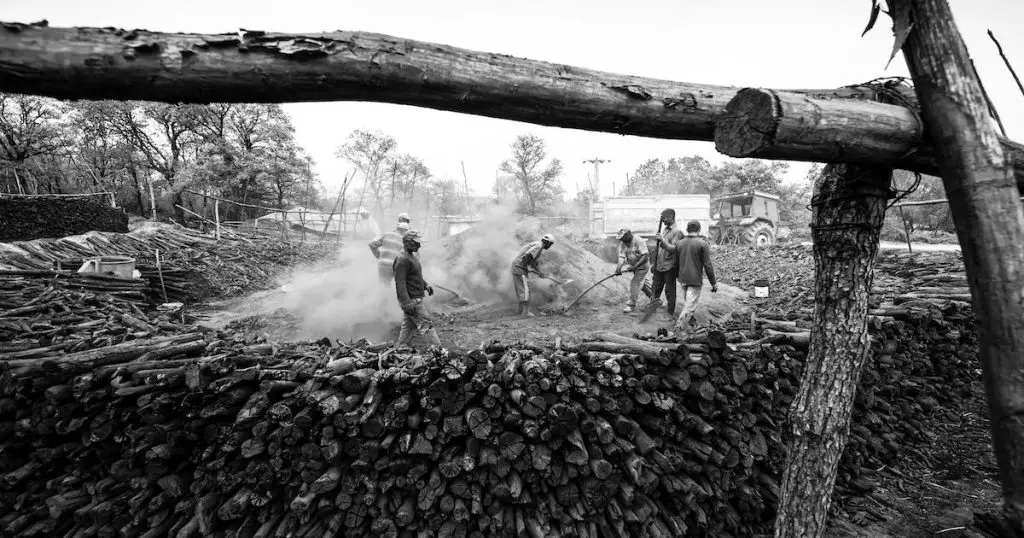Key takeaway: The Yavapai-Prescott Tribe manages natural resources through sustainable practices, focusing on water rights, land preservation, and wildlife conservation, ensuring environmental integrity and cultural heritage protection for future generations.
In the heart of Arizona, the Yavapai-Prescott Reservation stands as a beacon of cultural resilience and progress. The pursuit of education here transcends the mere acquisition of knowledge; it’s a powerful testament to the community’s enduring spirit and rich heritage.
This exploration into the educational landscape of the reservation is not just a narrative of learning; it’s a journey through a history of challenges, triumphs, and hopes intertwined with the pursuit of knowledge.
It aims to unfold the multifaceted dimensions of education within this vibrant Indigenous community, highlighting the significance of learning in preserving a legacy, empowering future generations, and harmonizing traditional wisdom with contemporary demands.
Discover what we have in store! Visit our product page now for exclusive deals and must-have items. Don't miss out!

Education on the Yavapai-Prescott Reservation is more than a pathway to literacy and employment; it is an essential tool for cultural preservation and community empowerment. This comprehensive article delves into the past, present, and future of educational opportunities available on the reservation, exploring how they shape the community’s identity and prospects.
From early childhood programs to adult education, from overcoming barriers to celebrating successes, this piece aims to provide a thorough understanding of the educational landscape within this unique community.
Historical Context
The educational journey on the Yavapai-Prescott Reservation is a reflection of resilience and adaptation in the face of changing times. Initially rooted in an oral tradition where knowledge was passed down through generations, the introduction of formal education systems marked a significant shift.
This section explores how these systems have evolved, reflecting broader social, political, and cultural changes, and how they have shaped the community’s approach to education.
The early schools on the reservation, established in the late 19th century, were the first steps in formalizing education for the Yavapai people. Over time, these institutions have transformed, adapting to the changing needs and aspirations of the community. This evolution is a testament to the community’s ability to blend traditional knowledge with modern educational practices, paving the way for a unique and dynamic learning environment.
Current Educational Landscape
Today, the Yavapai-Prescott Reservation boasts a diverse array of educational institutions. These range from preschools to community colleges, each playing a crucial role in nurturing the minds and talents of community members. This section delves into the various educational programs available, highlighting how they cater to different age groups and learning needs.
The foundation of lifelong learning is laid in early childhood, and the reservation’s preschools are dedicated to nurturing young minds. These programs often incorporate Yavapai language and culture, ensuring that children grow up with a strong sense of their heritage. This emphasis on early education is crucial in setting the stage for future academic and personal success.
Primary and secondary education options on the reservation provide a balanced approach to learning. Schools like the Yavapai-Prescott Indian Tribe’s own tribal school focus on delivering education that respects and incorporates Indigenous knowledge. This approach ensures that students receive a well-rounded education that honors their heritage while preparing them for the future.
Adult and continuing education opportunities are also a key component of the reservation’s educational landscape. These programs offer avenues for lifelong learning, essential for adapting to an ever-evolving world. From vocational training to higher education, these opportunities enable community members to enhance their skills and knowledge, opening doors to new possibilities.
Specialized Education Programs
In a community where language and culture are integral to identity, specialized education programs play a vital role. Language and cultural preservation courses, for example, are not just about teaching the Yavapai language; they are about keeping a vital part of the community’s soul alive. These programs ensure that the rich heritage of the Yavapai people is passed down to future generations, maintaining a living connection to their ancestral past.

Vocational and technical training programs on the reservation are equally important. They provide practical skills in various fields, aligning with current labor market needs. These programs empower students with the tools they need to succeed in a rapidly changing world, ensuring that they are not just learners but skilled professionals ready to contribute to their community and beyond.
Support Systems and Resources
Support systems and resources play a crucial role in ensuring that educational opportunities are accessible to all members of the Yavapai-Prescott Reservation.
Financial barriers, often a significant obstacle to higher education, are addressed through scholarships and financial aid specifically tailored for Indigenous students. These resources help level the playing field, making it possible for more students to pursue their educational aspirations.
Mentorship and tutoring programs complement these financial resources, offering personalized support to students. These programs help individuals navigate academic challenges, providing a supportive and nurturing environment that fosters academic success. By addressing both financial and academic barriers, these support systems play an essential role in creating a robust and inclusive educational landscape on the reservation.
Challenges and Barriers
Reservation is not without its challenges. Economic factors, such as limited funding for educational institutions and higher living costs, can impact the quality of education and access to essential resources. These economic challenges often intersect with broader social issues, necessitating comprehensive strategies that address the root causes of educational disparities.
Social challenges, including poverty, health issues, and social disparities, can also impede educational progress. These issues require holistic solutions that extend beyond the traditional boundaries of the classroom.
Addressing these challenges involves a community-wide effort, encompassing not just educational policy but also health, welfare, and economic development initiatives.
Collaborative Efforts and Partnerships
The Yavapai-Prescott Reservation has made significant strides in overcoming educational barriers through collaborative efforts and partnerships. The reservation’s engagement with local schools, colleges, and other educational institutions has been instrumental in enhancing educational offerings and creating more opportunities for students.
These partnerships facilitate resource sharing, curriculum development, and cultural exchange, enriching the educational experience for students.
Government and non-profit support also plays a critical role in bolstering the reservation’s educational initiatives. These entities provide additional resources, funding, and expertise, helping to bridge gaps in the educational system. Through these collaborations, the reservation has been able to implement innovative programs and initiatives that have a tangible impact on the community’s educational outcomes.
Case Studies and Success Stories
The reservation’s educational journey is marked by numerous success stories that serve as a source of inspiration. Alumni from the reservation’s schools have gone on to achieve remarkable feats in various fields, demonstrating the potential and efficacy of the educational programs available.
These success stories highlight the transformative power of education and serve as a testament to the community’s resilience and dedication to learning.
Educational programs and initiatives that have made a significant impact on the community deserve special recognition. For instance, language preservation initiatives have played a crucial role in reviving and sustaining the Yavapai language, fostering a renewed sense of pride and identity among the youth. These programs not only preserve linguistic heritage but also strengthen the community’s cultural fabric.
Future Directions
Looking ahead, the Yavapai-Prescott Reservation is poised to embrace emerging trends and innovations in education. The reservation is continuously exploring new and effective ways to enhance the learning experience and make education more accessible and relevant to its community members. This includes integrating technology in classrooms, expanding online learning options, and developing programs that align with the evolving needs of the job market.
Proposed plans and projects aimed at further developing the reservation’s educational infrastructure and resources indicate a commitment to continuous improvement and adaptation. These future directions are guided by a vision of an empowered, educated community that is equipped to face the challenges of the modern world while staying true to its cultural roots.
Community Perspectives
The perspectives of educators, administrators, students, and parents within the reservation provide invaluable insights into the educational landscape. Interviews with educators and administrators reveal the challenges, triumphs, and dedication behind the educational initiatives on the reservation. Their perspectives shed light on the nuances of delivering education in a culturally sensitive and effective manner.
Student experiences and testimonials offer a firsthand account of the impact of these educational opportunities. Their stories reflect the transformative power of education and the role it plays in shaping their futures. Similarly, parents’ views on education underscore the community’s aspirations and expectations regarding the role of education in their children’s lives.
Policy and Legislation
Policies and legislation significantly influence the educational landscape on the Yavapai-Prescott Reservation. This section examines relevant educational policies and laws and their impact on reservation education. It explores how governmental policies affect the allocation of resources, curriculum development, and the overall quality of education within the community.
The section also delves into the advocacy efforts for policy changes aimed at improving educational outcomes on the reservation. These efforts are crucial in ensuring that education policies are aligned with the community’s needs and aspirations, facilitating a more equitable and effective educational system.
Economic Impact
Education is a key driver of economic growth and development within the Yavapai-Prescott Reservation. This section explores how education contributes to the economic well-being of the community, highlighting the link between educational attainment and employment opportunities. It also discusses the long-term economic benefits of having an educated population, including improved living standards and increased economic resilience.
The economic impact of education extends beyond individual prosperity; it plays a vital role in the overall economic development of the reservation. By equipping community members with the skills and knowledge needed in the modern workforce, education fosters a dynamic and sustainable economic environment.
Cultural Impact
The cultural impact of education on the Yavapai-Prescott Reservation is profound. Education serves as a vital tool for preserving Indigenous culture and integrating traditional knowledge and values into modern educational practices. This section highlights how education helps maintain the community’s cultural identity and heritage, ensuring that these are passed down to future generations.
The reservation’s educational programs celebrate cultural diversity, creating an inclusive environment where different perspectives are valued and respected. This inclusive approach not only enriches the learning experience but also fosters a deeper understanding and appreciation of the community’s unique cultural heritage.

By blending traditional wisdom with contemporary education, these programs help maintain a vibrant cultural tapestry that is integral to the community’s identity.
Health and Well-being
Education on the Yavapai-Prescott Reservation also plays a crucial role in promoting health and well-being. Educational programs often incorporate elements of physical health, mental health, and nutrition, acknowledging the interconnection between education and overall health. This holistic approach ensures that students are not only academically proficient but also healthy and well-rounded individuals.
Mental health services and support within educational institutions are particularly important. These services provide students with the necessary tools to manage stress, build resilience, and maintain mental well-being, which are essential for academic success and personal development.
Physical health and nutrition education further contribute to a healthy learning environment, fostering a community of learners who are physically and mentally prepared to face life’s challenges.
Environmental Education
Environmental education is increasingly becoming a vital component of the curriculum on the Yavapai-Prescott Reservation. Teaching environmental stewardship and sustainability aligns with the community’s traditional values of respecting and protecting the natural world. This section explores how schools and educational programs are incorporating environmental education, emphasizing the importance of living in harmony with nature.
Sustainability programs in education not only teach students about environmental conservation but also how to apply these principles in their daily lives. These programs are crucial in cultivating a sense of responsibility towards the environment and equipping the next generation with the knowledge and skills to make sustainable choices.
Technology in Education
The integration of technology in education is transforming the learning landscape on the Yavapai-Prescott Reservation. Digital tools and resources enhance the learning experience, providing students with access to a wealth of information and learning opportunities. This section examines how the reservation is utilizing technology in classrooms and the impact of these advancements on education.
Bridging the digital divide is also a key focus, ensuring that all students have equal access to technological resources. Innovations in educational technology are not only making learning more engaging and interactive but are also preparing students for a world that is increasingly reliant on digital competencies.
Leadership and Administration
The leadership and administration behind the reservation’s educational initiatives play a pivotal role in shaping the educational landscape. This section profiles the educational leaders who are driving these initiatives, highlighting their vision, efforts, and the challenges they face in managing educational institutions.
The development of future leaders through education is also a key focus. By fostering leadership skills and providing opportunities for students to take on leadership roles, educational programs are preparing the next generation of leaders who will continue to guide and uplift the community.
Comparison with Other Indigenous Communities
Understanding the educational landscape on the Yavapai-Prescott Reservation can be enriched by comparing it with other Indigenous communities. This section explores similarities and differences in educational approaches, drawing lessons from other communities that have faced similar challenges and opportunities.
Collaborative learning and shared experiences among different Indigenous communities provide valuable insights. By examining how other communities have navigated their educational journeys, the Yavapai-Prescott Reservation can adopt best practices and strategies that have proven effective elsewhere, further enriching its own educational initiatives.
FAQs
In this section, we will be delving into some of the most common inquiries and curiosities that surround our topic.
What types of educational programs are available on the Yavapai-Prescott Reservation?
The Yavapai-Prescott Reservation offers a diverse range of educational programs, including early childhood education, primary and secondary education, adult and continuing education, vocational and technical training, as well as language and cultural preservation courses. These programs are designed to cater to different age groups and learning needs, emphasizing both academic proficiency and cultural heritage.
How does the reservation support students facing financial barriers?
The reservation provides various forms of financial assistance to students facing economic challenges. This includes scholarships and financial aid specifically tailored for Indigenous students, which help in making education more accessible and affordable. Additionally, there are mentorship and tutoring programs available to provide academic support.
Are there any initiatives to preserve the Yavapai language and culture through education?
Yes, there are several initiatives focused on preserving the Yavapai language and culture. Educational programs often incorporate language classes and cultural studies into their curriculum. These efforts are aimed not only at teaching the language but also at keeping the community’s traditions and heritage alive for future generations.
What role does technology play in education on the reservation?
Technology plays a significant role in modernizing the educational experience on the reservation. Digital tools and resources are increasingly being integrated into classrooms to enhance learning. Efforts are also being made to bridge the digital divide, ensuring that all students have access to the necessary technological resources.
Summary: Yavapai-Prescott tribal Natural Resource Management
In conclusion, the educational journey on the Yavapai-Prescott Reservation is a story of perseverance, innovation, and community. From overcoming historical challenges to embracing future possibilities, the reservation’s commitment to education is a testament to its dedication to nurturing a knowledgeable, skilled, and culturally grounded generation.
This exploration into the educational landscape reveals not just the strides made but also the path forward, marked by continuous learning, growth, and community empowerment.
The journey of education on the Yavapai-Prescott Reservation is far from complete, but its direction is clear – towards a future where education is a key pillar in upholding the community’s heritage, prosperity, and well-being.



Leave a Comment
You must be logged in to post a comment.